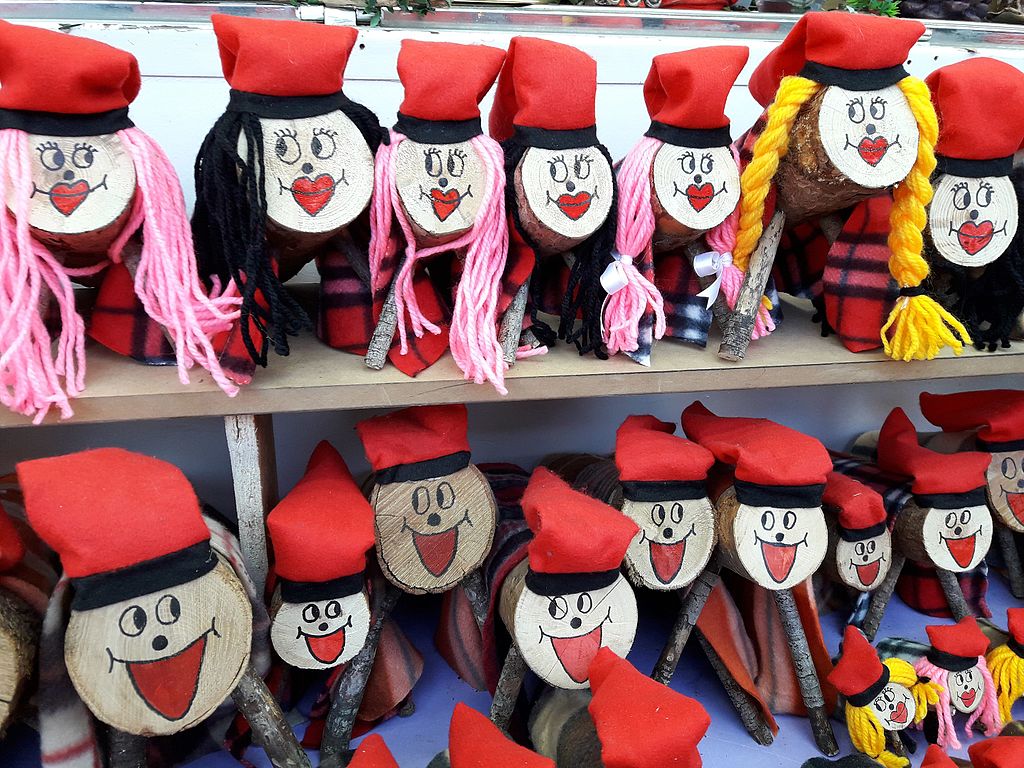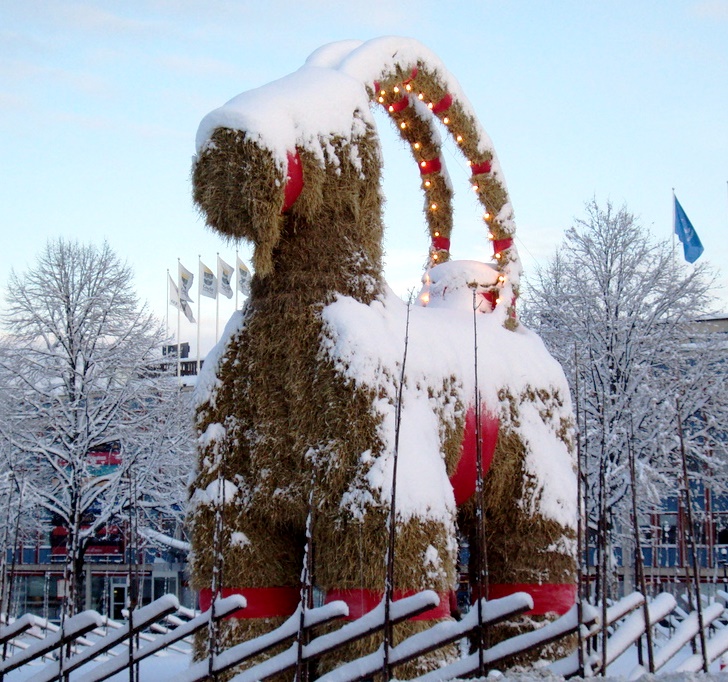15 Bizarre Christmas Traditions From Around The World
Christmas celebrations around the world are as diverse as they are delightful, each filled with unique customs that sometimes might seem surprising. While some traditions are common in many places, others are closely tied to local folklore or shaped by history. Here are 15 of the most unusual—and beloved—Christmas customs from around the world.

KFC Christmas (Japan)
In Japan, Christmas celebrations often center around Kentucky Fried Chicken. This might sound odd, but it all began in 1974 when KFC launched a successful marketing campaign encouraging families to enjoy fried chicken for Christmas. With few traditional Christmas customs in Japan, KFC filled the gap, and the custom quickly became a nationwide phenomenon.

Spider Webs on the Tree (Ukraine)
Artificial spider webs are a unique holiday decoration found on many Christmas trees in Ukraine. The custom originates from a folk tale in which a poor family’s tree was magically covered in spider webs that turned silver and gold. Ukrainians believe that decorating with spider webs invites prosperity for the year ahead.

Caga Tió (Catalonia, Spain)
The Caga Tió is a wooden log decorated with a face and a red hat. In the days leading up to Christmas, children “feed” the log small treats. On Christmas Eve, they return to sing songs and strike the log with sticks, eagerly awaiting it to “poop” out gifts and sweets.

Krampus (Austria, Germany)
If you associate Christmas with jolly figures, Krampus might be a shock. A horned creature from Alpine folklore, Krampus is the dark counterpart to St. Nicholas. On December 6, known as Krampusnacht, people dress up as this terrifying figure to punish naughty children. The spooky spectacle reminds children of the importance of good behavior.

Gävle Goat (Sweden)
Each December, the Swedish town of Gävle creates a giant straw goat to celebrate the Yule Goat, a symbol of Christmas. However, this isn’t just any goat—it’s famous for being vandalized despite strict security measures. People worldwide eagerly follow the fate of the Gävle Goat, which makes it a tradition filled with suspense.

Mari Lwyd (Wales)
Christmas in Wales comes with a curious visitor—a decorated horse skull called Mari Lwyd. People carry the skull from house to house, singing and engaging in a verbal “battle” with the homeowners. If they win, they are invited in for food and drink. This custom is thought to bring good luck for the coming year.

Christmas Pickle (USA, Germany)
A holiday mystery awaits those who celebrate the Christmas Pickle. This quirky tradition involves hiding a pickle ornament in the Christmas tree. Whichever child finds the pickle on Christmas morning gets an extra gift. The origins of this custom are unclear, with some tracing it to Germany and others to the United States.

Night of the Radishes (Mexico)
On December 23, Oaxaca, Mexico, hosts La Noche de los Rábanos (Night of the Radishes), a festival where artists carve intricate scenes from radishes. These carvings often depict Christmas or historical figures, showing local artistry in a unique medium. Crowds gather to admire the creativity of the sculptures and celebrate Mexican culture and craftsmanship.

The Christmas Witch (Italy)
In Italy, the festive season extends beyond Christmas Eve to Epiphany on January 5, when La Befana, a witch-like figure, delivers gifts to children. Legend says that she travels on a broomstick, leaving presents for well-behaved children and coal for those who’ve misbehaved. This charming tradition adds a magical touch to the Italian holiday season.

Fried Caterpillars (South Africa)
In South Africa, one Christmas delicacy may surprise you—fried caterpillars, specifically those of the pine tree emperor moth. Some regions of South Africa enjoy this dish during the holiday season, and it’s believed to bring good fortune. Though the concept might be unusual to outsiders, it celebrates the country’s unique flavors.

Roller Skating to Church (Venezuela)
Attending Christmas Eve mass takes on an adventurous twist in Caracas, Venezuela—people roller skate to church. Streets are closed to traffic, allowing families to skate safely through the city. This exciting tradition brings people together; hot chocolate often awaits skaters at the church entrance. It combines community, fun, and a bit of exercise.

The Yule Lads (Iceland)
The Yule Lads are 13 mischievous figures who visit children in the days leading up to Christmas in Iceland. Children leave a shoe out each night, hoping for a gift from the Yule Lad who visits that night. However, if they’ve been naughty, they may find a rotten potato instead.

Broom Hiding (Norway)
On Christmas Eve, Norwegian families hide their brooms. This might seem strange, but the tradition stems from old beliefs that evil spirits roam free during this time. They feel they can ward off any supernatural trouble by hiding their brooms. While the practice may sound quirky, it adds a touch of mysticism to the celebrations.

Burning the Devil (Guatemala)
Guatemalans celebrate Christmas with a fiery tradition—La Quema del Diablo (Burning of the Devil). On December 7, people gather to burn trash in bonfires to drive away evil spirits before the holiday. The cleansing ritual marks the beginning of the season, symbolizing the removal of negativity and welcoming positive energy.

Père Fouettard (France)
Père Fouettard, the “Whipping Father,” plays a key role in the St. Nicholas celebrations in France and Belgium. While St. Nicholas rewards good children with treats, Père Fouettard punishes the naughty ones by scaring them or giving them coal. This frightening figure adds a darker yet playful element to the holiday.






